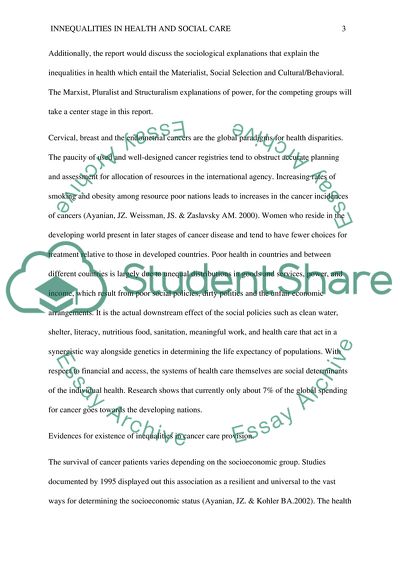Cite this document
(Inequalities in Health and Social Care Report Example | Topics and Well Written Essays - 2750 words - 1, n.d.)
Inequalities in Health and Social Care Report Example | Topics and Well Written Essays - 2750 words - 1. https://studentshare.org/sociology/1777235-inequalities-in-health-and-social-care
Inequalities in Health and Social Care Report Example | Topics and Well Written Essays - 2750 words - 1. https://studentshare.org/sociology/1777235-inequalities-in-health-and-social-care
(Inequalities in Health and Social Care Report Example | Topics and Well Written Essays - 2750 Words - 1)
Inequalities in Health and Social Care Report Example | Topics and Well Written Essays - 2750 Words - 1. https://studentshare.org/sociology/1777235-inequalities-in-health-and-social-care.
Inequalities in Health and Social Care Report Example | Topics and Well Written Essays - 2750 Words - 1. https://studentshare.org/sociology/1777235-inequalities-in-health-and-social-care.
“Inequalities in Health and Social Care Report Example | Topics and Well Written Essays - 2750 Words - 1”. https://studentshare.org/sociology/1777235-inequalities-in-health-and-social-care.


